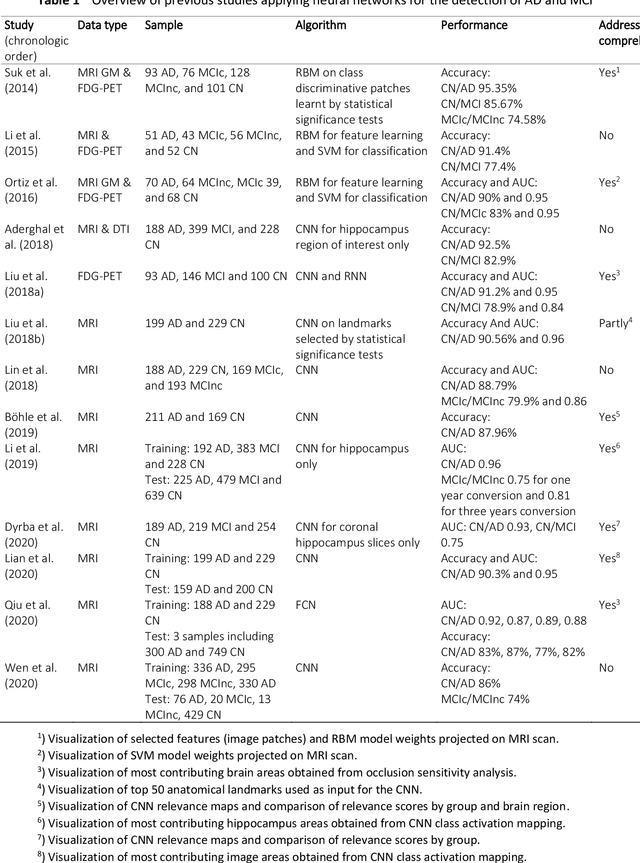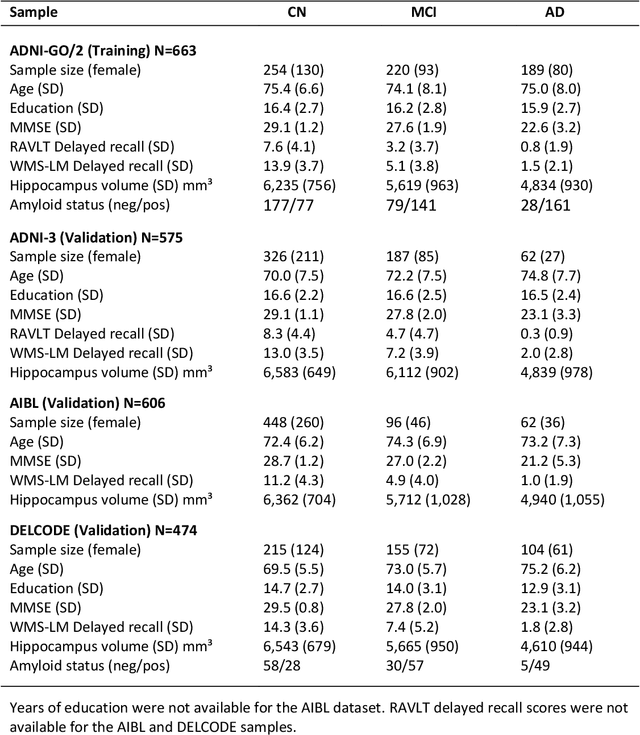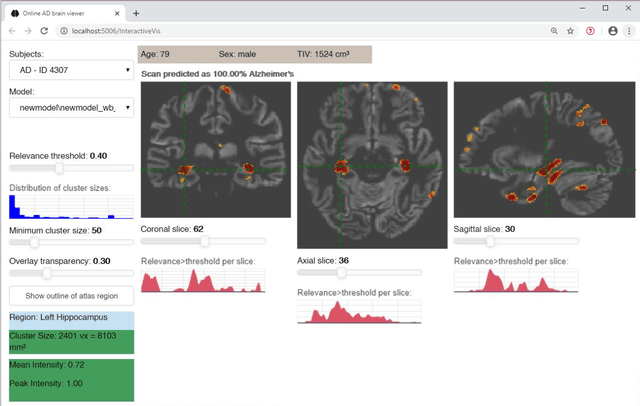Emrah Düzel
An automated, geometry-based method for the analysis of hippocampal thickness
Feb 01, 2023Abstract:The hippocampus is one of the most studied neuroanatomical structures due to its involvement in attention, learning, and memory as well as its atrophy in ageing, neurological, and psychiatric diseases. Hippocampal shape changes, however, are complex and cannot be fully characterized by a single summary metric such as hippocampal volume as determined from MR images. In this work, we propose an automated, geometry-based approach for the unfolding, point-wise correspondence, and local analysis of hippocampal shape features such as thickness and curvature. Starting from an automated segmentation of hippocampal subfields, we create a 3D tetrahedral mesh model as well as a 3D intrinsic coordinate system of the hippocampal body. From this coordinate system, we derive local curvature and thickness estimates as well as a 2D sheet for hippocampal unfolding. We evaluate the performance of our algorithm with a series of experiments to quantify neurodegenerative changes in Mild Cognitive Impairment and Alzheimer's disease dementia. We find that hippocampal thickness estimates detect known differences between clinical groups and can determine the location of these effects on the hippocampal sheet. Further, thickness estimates improve classification of clinical groups and cognitively unimpaired controls when added as an additional predictor. Comparable results are obtained with different datasets and segmentation algorithms. Taken together, we replicate canonical findings on hippocampal volume/shape changes in dementia, extend them by gaining insight into their spatial localization on the hippocampal sheet, and provide additional, complementary information beyond traditional measures. We provide a new set of sensitive processing and analysis tools for the analysis of hippocampal geometry that allows comparisons across studies without relying on image registration or requiring manual intervention.
Improving 3D convolutional neural network comprehensibility via interactive visualization of relevance maps: Evaluation in Alzheimer's disease
Dec 18, 2020



Abstract:Although convolutional neural networks (CNN) achieve high diagnostic accuracy for detecting Alzheimer's disease (AD) dementia based on magnetic resonance imaging (MRI) scans, they are not yet applied in clinical routine. One important reason for this is a lack of model comprehensibility. Recently developed visualization methods for deriving CNN relevance maps may help to fill this gap. We investigated whether models with higher accuracy also rely more on discriminative brain regions predefined by prior knowledge. We trained a CNN for the detection of AD in N=663 T1-weighted MRI scans of patients with dementia and amnestic mild cognitive impairment (MCI) and verified the accuracy of the models via cross-validation and in three independent samples including N=1655 cases. We evaluated the association of relevance scores and hippocampus volume to validate the clinical utility of this approach. To improve model comprehensibility, we implemented an interactive visualization of 3D CNN relevance maps. Across three independent datasets, group separation showed high accuracy for AD dementia vs. controls (AUC$\geq$0.92) and moderate accuracy for MCI vs. controls (AUC$\approx$0.75). Relevance maps indicated that hippocampal atrophy was considered as the most informative factor for AD detection, with additional contributions from atrophy in other cortical and subcortical regions. Relevance scores within the hippocampus were highly correlated with hippocampal volumes (Pearson's r$\approx$-0.81). The relevance maps highlighted atrophy in regions that we had hypothesized a priori. This strengthens the comprehensibility of the CNN models, which were trained in a purely data-driven manner based on the scans and diagnosis labels. The high hippocampus relevance scores and high performance achieved in independent samples support the validity of the CNN models in the detection of AD-related MRI abnormalities.
 Add to Chrome
Add to Chrome Add to Firefox
Add to Firefox Add to Edge
Add to Edge